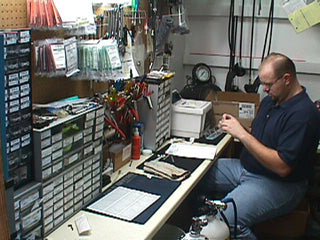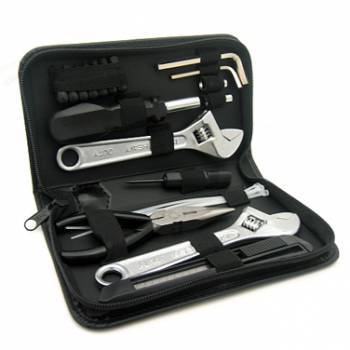REPAIR SERVICES
To extend the life of your equipment and to minimize the chance of diving accidents, it is critical that your equipment be in top working order for every dive. Tom’s Dive and Swim provides affordable servicing for you equipment. Whether you own just a mask, snorkel and fins, or a complete set of scuba gear, every diving dollar you invest will be maximized through proper equipment maintenance procedures and annual servicing.
- Tom’s Scuba technicians are factory trained for all major scuba manufacturers including: Aqua Lung, Apeks, Atomic, Sherwood, Spare Air, Suunto, OTS, AGA, Whites.
- Each piece of equipment receives the amount of time it requires to fully complete the requested servicing. We have no time limits, even though we charge a flat rate for each servicing program.
- All servicing is performed according to manufacturer’s specifications using annual service kits and approved parts provided by the appropriate manufacturer.


What is in a full service regulator rebuild?
- Air test is preformed prior to disassembly.
- Hoses are inspected for integrity.
- Complete disassembly of all stages including console and gauges.
- Hot water soap bath on all parts.
- Ultrasonic cleaning of all metal parts.
- All parts are air dried and reassembled with new parts required by manufacturer and the technician.
- Complete submersion in a water bath while on a 3000 p.s.i. tank for leak test.
We do service for local Navy Teams, Coast Guard Teams, Fire Departments, Police Departments and other well known State and Federal Agencies.
We frequently accept repairs via UPS and FEDEX.
If you would like to ship your equipment to us please contact us or simply fill out the pdf form available here. We have customers throughout the region, including governmental agencies, using this method for their repairs and service.
Before you dive:
- Check over all condition of hoses: Cracked or split hoses should be replaced.
- Inspect the mouth piece and insure that it is free from tears and secured with a tie wrap.
- Inspect the pressure and depth gauges and make sure they both read 0 on the surface. If they do not, improper readings could be given under water.
- Orally inflate your B.C. and make sure it holds air for at least 10 minutes.
- Deflate it using each one of the dump valves as well as the inflator.
- Check the filter on the first stage. If there is any discoloration, do not use until the regulator has been evaluated by a trained technician.
- Attempt to inhale from both your primary and your backup second stages. If you can inhale from either there is a problem with the integrity of the second stage. Do not use until the regulator has been evaluated by a trained technician.
- Attempt to exhale from both the primary and backup second stages. Exhalation should be effortless. If not gently rinse the exhaust valve in clean water and try again. If it is still not easy, do not use until it has been evaluated by a trained technician.
- Pressurize your regulator and listen for leaks. If you hear one, do not use. Any leak should be evaluated by a trained technician.
After every time you dive:
- Always replace dust cap on your first stage when not on a cylinder, make sure it is free of debris and moisture.
- Rinse all of you equipment with fresh water including putting fresh water inside your B.C. bladder through the inflator mechanism. This may need to be done several times to insure sand and salt are removed. We also recommend using a commercial dive gear cleaner such as Sink the Stink for the outside and B.C. Life for the inside of the B.C.
- Thoroughly drain the water from your B.C. using each dump valve and the inflator insuring they a free from sand and salt. Allow all of your equipment to air dry.
- Wetsuits that continue to smell should be washed in a commercial cleaner such as Sink the Stink. Never put them in a washing machine or dryer!
Storage of gear:
- Make sure it is dry.
- Always store your equipment inside and not in garages or attics. Texas heat is hard on the equipment.
- Never store your regulator hanging from the hoses. Hang it from the first stage or gently roll up the hoses. Never bend the hoses at sharp angles.
- Wetsuits should be hung up on heavy duty hangers. Never fold them as they tend to permanently crease.

